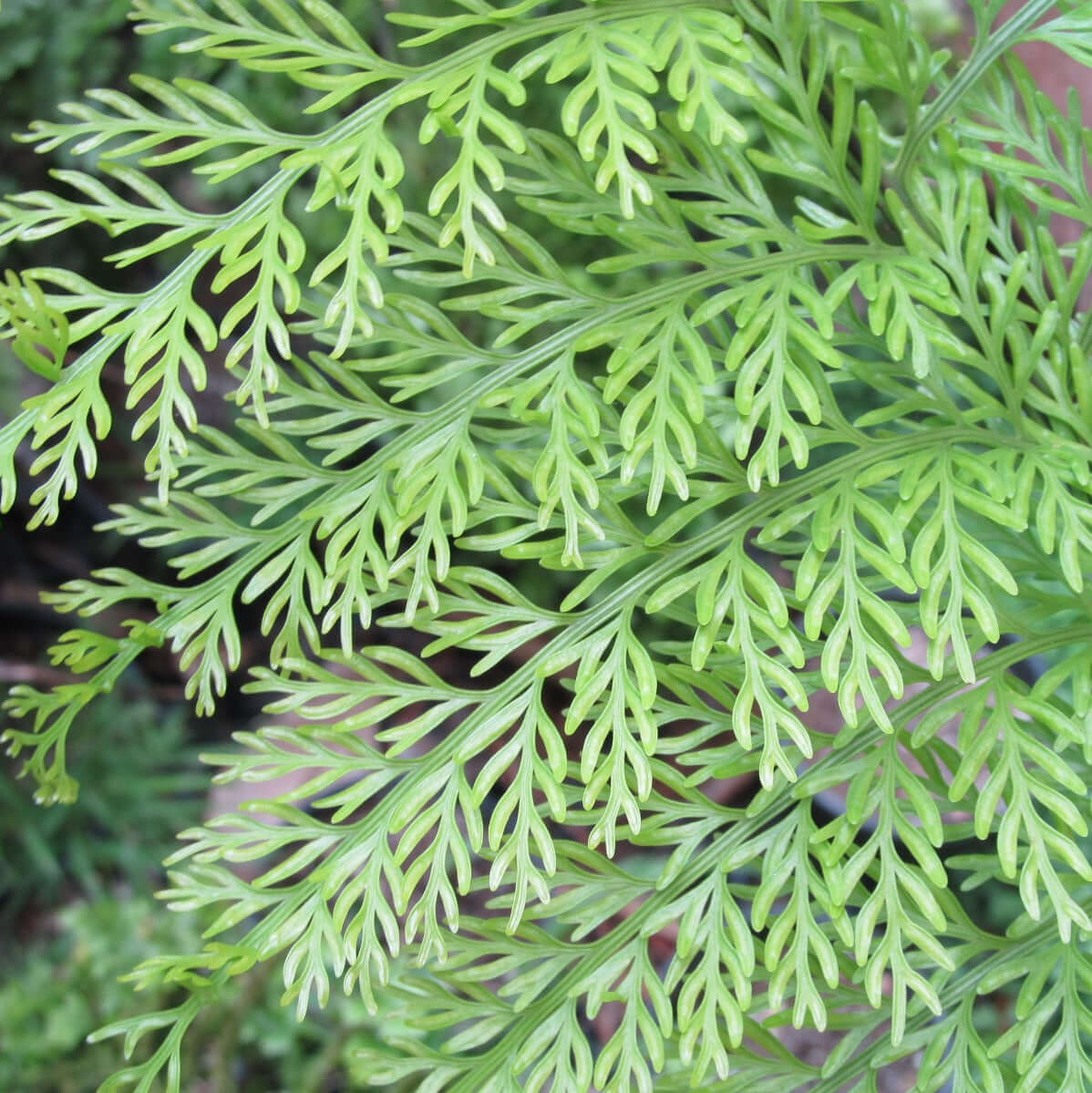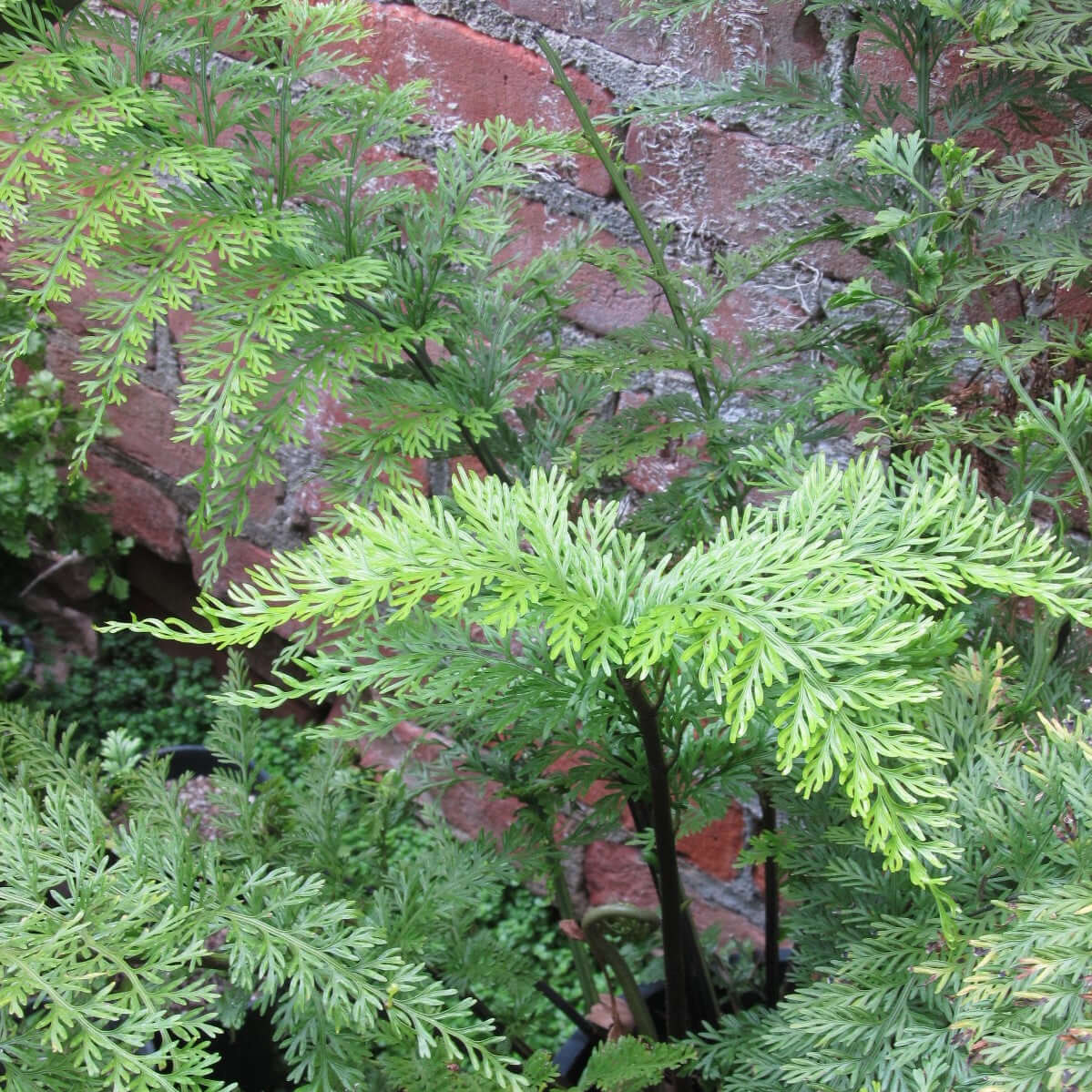
Mother Fern
Asplenium bulbiferum
Delivery
24-hour money-back guarantee
Free delivery on orders over $349
Big Project? Call 888-444-1126 for bulk rates!
Asplenium bulbiferum is a beautiful fern with glossy, pale green, arching foliage prized for its graceful habit and unique ability to produce “baby plants” known as bulbils along its fronds. This unusual characteristic gives Asplenium bulbiferum its common names of Mother Fern, Hen and Chicken Fern, and Mother Spleenwort. Lacy and luxuriant, Mother Fern adds texture and elegance in a shady garden.
Mother Fern is a medium-size fern that spreads 3 ft. wide by short, creeping to suberect rhizomes. This semi-hardy to semi-tender evergreen fern is soft textured with finely cut blades and long fronds that measure 2-3 ft. long. The offspring, or plantlets, produced on the top of the leaf add another dimension of texture. The foliage color can change from light green to yellowish-green in brighter light, adding another exciting element to the landscape.
Asplenium bulbiferum is easy to grow and is an excellent fern for shady areas in the landscape with moist soils. Mother Fern looks great in tropical, meadow, or woodland gardens in mass plantings, as an accent, or in containers. It can also be grown indoors in bright, indirect light.
With its graceful, arching habit, glossy green fronds, and lacy appearance, Asplenium bulbiferum adds texture and interest in a shady landscape. Easy to grow and low maintenance, Mother Fern is a popular choice for California’s mild climate gardens in the central or southern coastal areas.
How large does the Mother Fern grow?
What kind of light does the Mother Fern prefer?
What type of soil does it need?
How should it be watered and maintained?
1-3 ft.
3-4 ft.
Moderate
Perfect Your Landscape With Expert Help
Customize your yard with confidence. Schedule your free consultation today and bring your outdoor space to life!


